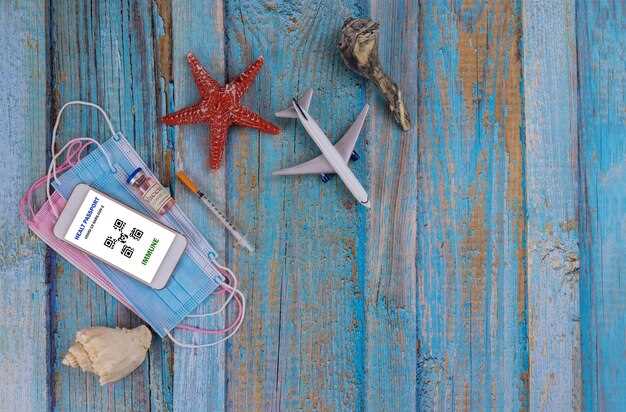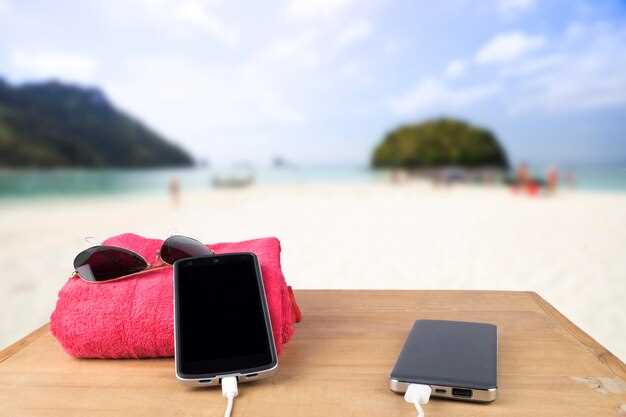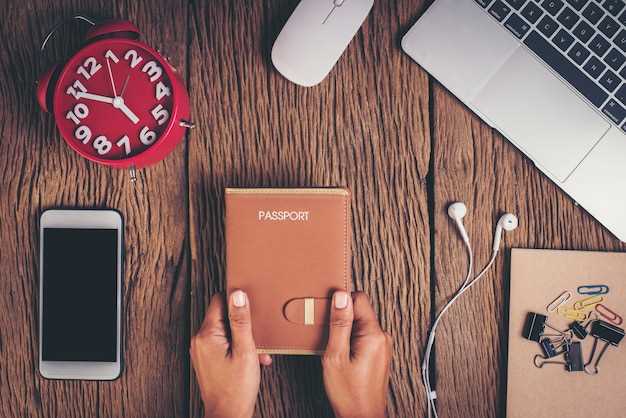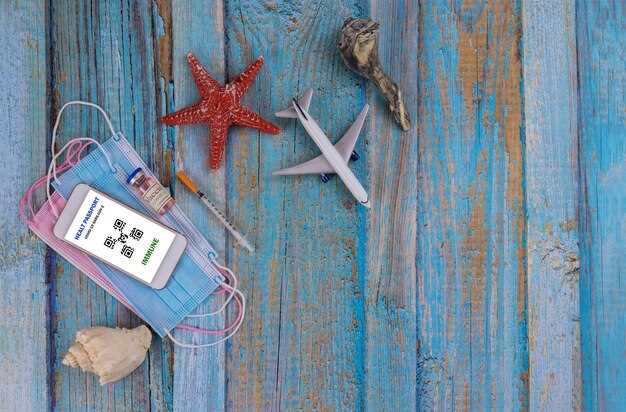Choosing the right power bank for your travels can make a world of difference for any jet-setter, especially with the ever-watchful eyes of the TSA. Anker PowerCore 10000 stands out as an excellent choice. This compact powerhouse not only provides rapid charging with its PowerIQ technology but also adheres strictly to TSA guidelines with its 10,000mAh capacity. Its lightweight design means it won’t weigh you down, making it a staple in every traveler’s kit.
For those needing a little more juice without crossing the TSA’s 100Wh limit, the RAVPower 26800mAh is a strong contender. With its high-density Li-polymer battery, this power bank charges a variety of devices efficiently, all while ensuring compliance with airline regulations. The multiple ports allow simultaneous charging of several gadgets, a true relief for modern multitaskers.
Travelers who prioritize portability might appreciate the Zendure A2. Renowned for its durability, this model balances energy efficiency with a robust 6700mAh capacity, far from any regulatory red flags. This durable power bank effortlessly slips into a small carry-on, proving that sometimes, smaller means smarter.
Ultimately, selecting a TSA-compliant power bank doesn’t have to be a daunting task. By opting for devices like the Anker PowerCore 10000, RAVPower 26800mAh, or Zendure A2, you gain reliable energy sources that cater to the needs of both your devices and travel authorities. These models promise uninterrupted connectivity and peace of mind on your journey, allowing you to focus on exploring without the worry of running out of power.
Understanding TSA Regulations

Ensure your power bank complies with TSA regulations by considering battery capacity and packaging. The TSA restricts lithium-ion power banks to a maximum capacity of 100 watt-hours (Wh). If your device exceeds this, but remains under 160 Wh, seek airline approval before traveling. Calculate watt-hours by multiplying amp-hours (Ah) by voltage (V), which allows you to easily verify compliance.
- Carry power banks in carry-on luggage, as placing them in checked baggage is prohibited due to fire risks.
- Avoid devices with unclear labeling. Check that the capacity is printed on the device to prevent security hassles.
- Consult your airline’s specific policies if carrying multiple power banks. While TSA allows up to two spare batteries over 100 Wh with approval, individual airlines may have stricter rules.
- For model-specific advice, visit your power bank manufacturer’s website or contact them directly.
By following these guidelines, you’ll travel confidently, knowing your power bank meets all safety and regulatory standards.
What Makes a Power Bank TSA Approved?

Choose a power bank with a capacity under 100Wh to meet TSA requirements easily. Here’s a more detailed explanation to guide your selection:
- Capacity Matters: Power banks under 100 watt-hours (Wh) are considered safe for carry-on bags. You can check the Wh on the power bank’s label or calculate it by multiplying amp-hours (Ah) by volts (V).
- Label and Markings: Ensure the power bank has clear labeling of its capacity. TSA officers might ask for it, so visible markings simplify the security process.
- Chemistry Checks: Lithium-ion is the most common and accepted battery type in power banks. Avoid unapproved battery chemistries that could raise security concerns.
- Connectivity Options: TSA-approved power banks might include USB-C and USB-A ports, ensuring universal compatibility with devices while traveling. This feature isn’t a TSA requirement but adds convenience.
- Compliance with Air Travel Regulations: Some airlines might have their specific policies, so always check guidelines before flying. Even if a power bank is TSA-approved, airline regulations may vary.
By keeping these points in mind, you can choose a power bank that won’t cause any inconvenience during airport security checks, ensuring a smoother travel experience.
Battery Capacity Limits for Air Travel
Ensure your power bank’s capacity does not exceed 100 watt-hours (Wh) per battery, as most airlines allow these in carry-on luggage without prior approval. However, if your device’s capacity ranges between 100Wh and 160Wh, you may still bring it, but you must first obtain permission from the airline.
To calculate your power bank’s watt-hours, multiply the voltage (V) by the ampere-hours (Ah). For example, a 3.7V power bank with 10,000mAh capacity translates to 37Wh, making it well within the standard limit. This formula is especially useful for confirming compliance before travel.
Avoid carrying power banks in checked baggage; they must be in your carry-on bag. Keep in mind that each passenger is typically limited to a maximum of two power banks with a capacity between 100Wh and 160Wh, following airline approval.
Checking with your airline for specific regulations is a good practice, as rules may vary slightly. By adhering to these guidelines, you ensure a smoother security check and avoid the risk of having your devices confiscated.
How to Pack Your Power Bank Before Your Flight
Place your power bank in your carry-on luggage, not in checked baggage. TSA requires lithium-ion batteries, like those in power banks, to be accessible in case of emergency. Check the capacity label on your device; it should be under 100Wh, or you’ll need airline approval.
To protect your power bank from damage during travel, use a protective case. This safeguards against accidental activation. Some models feature an in-built case, but if not, opt for a sturdy, shock-resistant case.
Keep power banks isolated from metal objects such as keys or coins to avoid short circuits. Place them in a separate pocket or compartment in your bag. It’s a good idea to recharge them before your flight so they’re ready to use when you need them, ensuring no cables are attached while in your bag.
Many power banks include indicators to display charge levels. Before boarding, verify the power status to guarantee they’re adequately charged for your needs. This also helps identify any potential malfunctions early on.
Be aware of airport security requirements. Some airports may have specific rules regarding the carriage of electronics. Familiarize yourself with these regulations to avoid any delays during the security check process.
By organizing and preparing your power bank wisely, you ensure a hassle-free travel experience, keeping your devices charged and ready throughout your journey.
Top Travel Power Banks for 2025

For consistent power on the go, the Anker PowerCore 26800mAh emerges as a standout choice. This powerful device boasts dual micro USB ports for a quick recharge, while its three USB outputs allow for simultaneous charging of multiple devices. With a high-speed charging technology, it ensures your gadgets are powered up efficiently, making it perfect for long flights or layovers.
The RAVPower 20000mAh is another strong contender, offering a quick recharge feature and a compact design that fits easily into any travel bag. This power bank is compatible with a wide range of devices, including tablets and smartphones, and its sturdy build ensures durability against the hustles of travel.
For eco-conscious travelers, the Blavor Solar Charger offers wireless charging capabilities paired with solar panel technology. With a capacity of 10000mAh and IPX4 waterproof rating, it’s a reliable option for outdoor enthusiasts. Although solar charging is slower, the convenience of energy independence is a major advantage.
Consider the Zendure SuperTank, which provides a massive 27000mAh capacity and the ability to charge a laptop with its 100W USB-C output. It also features a low-power mode for smaller devices such as smartwatches, catering to diverse charging needs.
Lastly, the Aukey PB-Y36 distinguishes itself with its compact size and 10000mAh capacity, delivering reliable power in a pocket-friendly frame. Its dual USB-A ports support simultaneous charging, and its integrated safeguards protect against excessive current and overheating, ensuring peace of mind during your travels.
Features to Look for in 2025 Power Banks
Prioritize high capacity power banks with at least 20,000mAh to ensure multiple charges for your devices. This will be essential for frequent travelers or users with multiple devices.
Focus on fast charging technology. Look for power banks with Power Delivery (PD) 3.0 and Quick Charge 5.0 capabilities. These technologies significantly reduce charging time, ensuring your devices get back to work as swiftly as possible.
Consider power banks with built-in solar panels or wireless charging features. Solar panels provide an eco-friendly charging solution, while wireless charging offers convenience for compatible devices.
Select power banks equipped with multiple ports, including USB-A, USB-C, and possibly even AC outlets. This flexibility allows you to charge various devices simultaneously, from smartphones to laptops.
Ensure that your power bank has an LED display that indicates battery level and charging status. This feature gives you clear insights into power usage, helping you plan your recharges accurately.
Choose models with advanced safety features such as overcharge and short circuit protection. These features safeguard both your devices and the power bank itself, enhancing long-term reliability.
Check for compact and lightweight designs without compromising performance. The best options fit easily into bags or pockets, making them perfect travel companions on the go.
Look into sustainability aspects. Some companies now offer power banks made from recycled materials or those with easily replaceable batteries to promote a greener ethos.
Finally, seek out smart technology integration. Newer power banks can offer app connectivity, providing monitoring and remote control through your smartphone for enhanced user experience.
Review of the Latest TSA Compliant Models
The Anker PowerCore 10000 Redux offers a compact design and lightweight build, making it a perfect travel companion for any frequent flyer. With a capacity of 10,000 mAh, this model provides enough power to charge most smartphones up to three times. Its TSA compliance ensures that you won’t face any issues during security checkpoints.
Next on the list is the RAVPower 20000mAh PD 3.0 Power Bank, which combines high capacity with fast charging capabilities. This power bank supports USB-C Power Delivery, allowing you to quickly recharge your devices while on the move. Despite its robust 20,000 mAh capacity, it adheres to TSA regulations, making it ideal for long trips.
The Zendure A2 is another excellent option for travelers. This model boasts a rugged design, perfect for withstanding the rigors of travel. With 6,700 mAh capacity, it’s slightly smaller but still efficient for multiple charges on the go. Plus, its compliance with TSA rules ensures a hassle-free experience at airports.
For those who need a little more juice, the MAXOAK 50,000 mAh Power Bank stands out for its tremendous capacity. While it offers multiple outputs, including USB-C compatibility, it’s crucial to note that it must be carried in your carry-on due to its size. This model is impressive in delivering consistent power without violating TSA guidelines.
| Model | Capacity | USB-C Support | TSA Compliant |
|---|---|---|---|
| Anker PowerCore 10000 Redux | 10,000 mAh | No | Yes |
| RAVPower 20000mAh PD 3.0 | 20,000 mAh | Yes | Yes |
| Zendure A2 | 6,700 mAh | No | Yes |
| MAXOAK 50,000mAh | 50,000 mAh | Yes | Yes |
Considering these options, travelers can confidently select a power bank that suits their needs without worrying about TSA restrictions. Whether you prioritize capacity, size, or charging speed, there’s a model ready to make your journeys smoother and more powered.
Comparing Brands: Which Offers the Best Value?
Anker’s PowerCore series consistently delivers high-capacity options with rapid charging technology, making it a top choice for travelers seeking reliability. Their devices usually sit well within TSA’s restrictions, ensuring hassle-free travel.
The RAVPower power banks add impressive longevity to electronic gadgets, thanks to their iSmart technology which optimizes charging speeds. Their compact design offers robust portability without compromising on performance, offering a solid balance between price and feature set.
Looking for something eco-friendly? Nimble offers sustainable options like the CHAMP Lite, crafted from recycled materials. Despite the environmentally friendly design, Nimble maintains competitive pricing and efficiency, providing meaningful savings over time.
For tech enthusiasts who prioritize fast charging, Aukey’s PD Power Bank provides USB-C Power Delivery, handling multiple devices seamlessly. This option delivers significant power in a lightweight frame, making it ideal for users with higher energy demands.
Budget-conscious buyers won’t go wrong with Zendure’s A-Series, offering sturdy build quality and dependable performance at attractive prices. Their models often include additional USB ports, offering great flexibility without leaving a dent in your wallet.
When weighing these brands, consider what’s most important for your needs–durability, eco-friendliness, or speed. Each brand presents distinct advantages, but they all align with smart travelers seeking practical solutions under TSA guidelines.
Customer Reviews and Ratings
Consider RavPower’s 20,000mAh power bank as the go-to option for frequent travelers. This power bank scores an impressive average rating of 4.7 out of 5 stars on multiple retail platforms, attributed to its capacity and compact design. Users often highlight its rapid charging capabilities, which allow a smartphone to reach full charge in under two hours.
Anker’s PowerCore 10000 is another crowd favorite with a 4.8-star rating based on over 30,000 reviews. Customers appreciate its lightweight build, making it an ideal companion for business trips. Its PowerIQ technology delivers fast charging tailored to different devices, which adds to its appeal.
| Power Bank Model | Average Rating | Highlighted Features |
|---|---|---|
| RavPower 20,000mAh | 4.7 | High capacity, fast charging |
| Anker PowerCore 10000 | 4.8 | Lightweight, PowerIQ technology |
| Zendure SuperTank | 4.6 | Durable design, multi-device charging |
The Zendure SuperTank holds a solid 4.6-star rating as well, known for its sturdy construction and ability to charge multiple devices simultaneously. Many reviewers commend its durability, ideal for long-haul flights and rugged adventures. With these recommendations, you can confidently find a power bank that meets your travel needs without hassle.
Where to Purchase Travel Power Banks?
Start your search for travel power banks on Amazon. Their vast selection includes reliable brands like Anker and RAVPower, often accompanied by customer reviews and ratings to help guide your choice. With the convenience of fast shipping and regular discounts, Amazon is an excellent place to find a deal.
If you prefer in-person shopping, Best Buy offers a variety of travel-friendly power banks. Here, you can consult with knowledgeable staff who can offer specific product insights and recommendations. Best Buy’s price match guarantee ensures you receive a competitive price.
For tech enthusiasts, check out B&H Photo Video. This store not only provides a wide range of options but also detailed product specifications, crucial for tech-savvy travelers seeking the best fit for their gadgets.
- Amazon: Extensive selection, user reviews, quick delivery.
- Best Buy: In-store assistance, price match guarantee.
- B&H Photo Video: Tech-focused descriptions, comprehensive options.
Digital nomads may find Newegg to be a valuable resource. Known for its broad inventory of electronic goods, Newegg often offers competitive prices on power banks, along with detailed user reviews and product comparisons.
Finally, if sustainability matters to you, consider the eco-friendly options at EarthHero. They offer power banks crafted from sustainable materials, ensuring you stay powered while caring for the environment.
- Newegg: Competitive pricing, detailed comparisons.
- EarthHero: Sustainable options for eco-conscious buyers.
Each of these retailers provides unique advantages, allowing you to make a well-informed decision based on your purchasing preferences and power bank needs. Happy shopping!
Q&A:

What factors determine if a power bank is allowed by TSA?
The TSA has specific guidelines regarding lithium-ion batteries, which are the type found in most power banks. The power capacity, which is often measured in watt-hours (Wh), must not exceed 100Wh for carry-on luggage without approval, and up to two power banks between 100Wh and 160Wh with airline approval. The power bank must always be in carry-on baggage, as they are prohibited in checked luggage due to fire risks associated with lithium batteries.
Are solar power banks TSA-approved?
Solar power banks can be TSA-approved, provided they fall within the standard battery capacity limits set by TSA regulations. It’s important that the power capacity is within these limits and that the solar panels do not contain additional lithium batteries. As with regular power banks, they must be carried in your hand luggage.
Does the brand of power bank matter for TSA approval?
The brand itself does not usually affect TSA approval. What matters is the power bank’s battery capacity and its compliance with safety standards. However, some well-known brands are more likely to adhere to these regulations and provide clearer labeling, which can make airport security checks smoother.
Can I charge my power bank in-flight?
The ability to charge your power bank during a flight depends on the airline’s regulations and the availability of charging ports on the aircraft. Most modern aircrafts do have USB ports and power outlets, but it’s a good idea to check with your airline beforehand. Additionally, make sure to have the power bank in your carry-on, as charging is not possible if it’s checked in.
Is it possible to carry more than two power banks on a plane?
Technically, there is no restriction on the number of power banks you can carry, as long as they each fall under the 100Wh limit. However, having just two in the 100-160Wh range requires airline approval. Always check with your airline for additional restrictions they may have in place, as rules can vary.
What are the key features to look for in a power bank to ensure it complies with TSA regulations?
When choosing a power bank that complies with TSA regulations, it is important to consider its battery capacity, as the TSA limits lithium-ion batteries to a 100-watt hour (Wh) capacity per device. This generally translates to about 27,000mAh. Some airlines may allow up to 160Wh with prior approval, but it’s best to confirm with your carrier. Ensure that the power bank clearly displays its capacity in Wh or mAh. Additionally, the power bank should be easily accessible in your carry-on luggage for separate inspection if needed. Finally, make sure it is switched off during the flight to prevent accidental activation.
